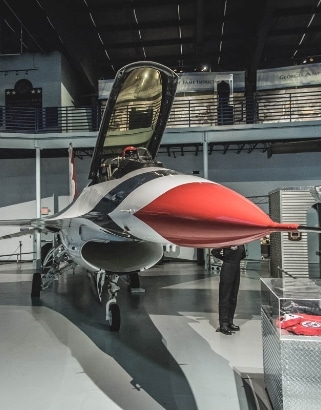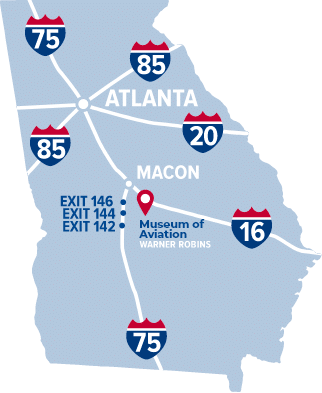The F-16 evolved from a 1972 USAF Lightweight Fighter prototype program which sought a small, lightweight, low cost, air superiority day fighter designed for high performance and ease of maintenance. It achieved combat ready status in October 1980. Many foreign nations, including Belgium, Denmark, Turkey, Egypt and Israel have purchased the F-16.
The F-16A on display (S/N 81-0676) was one of the first F-16s to be received by the Thunderbirds in 1982 when they transitioned from T-38s to F-16s. The Thunderbirds continued to fly this aircraft until 1992 when they converted to F-16Cs. It was then modified to operational condition and assigned to the 425th Fighter Squadron at Luke AFB, Arizona before being retired to Sheppard AFB, Texas as a ground instructional trainer in 1993. It was moved to the Museum of Aviation in 2008.









